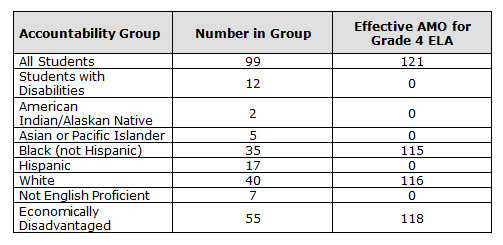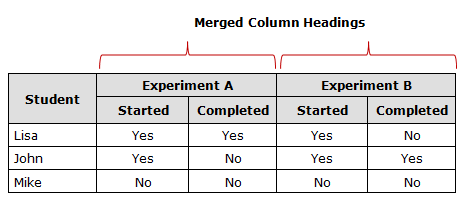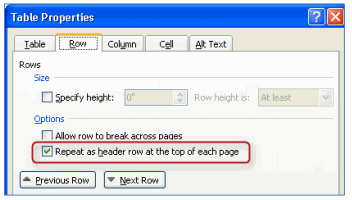Tables
Simple vs. Complex Tables
To create accessible tables for the presentation of data, keep them simple! Complex tables with merged or split cells cannot be made accessible with Microsoft Word. Users should therefore consider alternative ways to present the data to avoid using complex tables. If no alternative for a complex table can be found then users will be required to convert the Word document to Adobe PDF and properly markup the complex table to ensure that it is accessible.
Example of a Simple Table (No merged or split cells)
Example of a Complex Table (Merged cells)
How to Make Simple Tables Accessible
With a few simple steps, it is easy to make simple tables accessible with Microsoft Word. Before you insert your table, it’s a good idea to know how many columns and rows you need. Remember to add a row at the top for the column headers. The width of your columns should also be considered, so that the table does not exceed the width of the page. For some tables, you may need to change the page orientation to Landscape to give yourself more room horizontally. Text should be at least 10pt Arial in tables, but 11pt is preferred.
- Use the Insert Table command to create tables, not by hand with spaces or the Tab key.
- Highlight just the top row of your table, right click, and choose Table Properties.
- Select the Row tab.
- Uncheck the box labeled “Allow rows to break across pages.”
- Check the box labeled “Repeat as header row at the top of each page.”
- Select the Alt Text tab
- Enter a Title and a Description for the table.
- Do not create your table using the Draw > Table tool, which is available in the Table tools on the Insert ribbon.
- Do not add a merged cell at the top of your table for the title.
- Do not control spacing in your table with blank rows or columns. Adjust line spacing instead using the choices in the Paragraph section of the ribbon.
- Do not merge cells!
- Do not split cells!
- Do not have empty cells! – Put text into each cell, even if it’s “0”, “null”, “n/a”, or “none.” This text can be made white in color if you do not want your sighted users to be distracted by it.
Please Note: If, after reviewing these tools, you still have questions about the web accessibility procedures, you may contact your Web Content Manager or the SED Help Desk. You may also submit your question to the NYSED Web Accessibility Support Forum.









